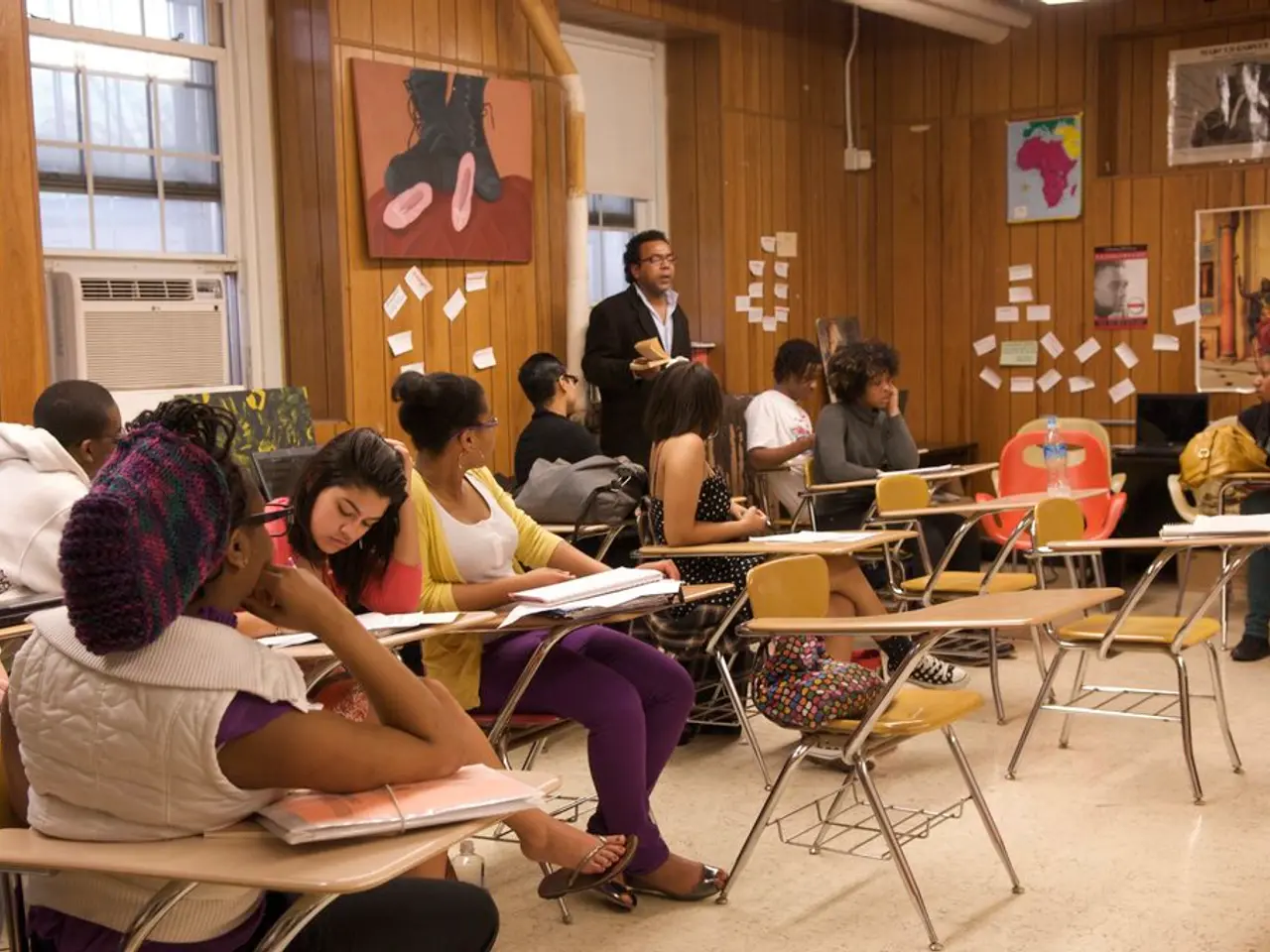Striking the Right Balance Between Work and Personal Life for Educators: Methods for Triumph
In the educational sector, work-life balance for teachers is a crucial aspect that ensures educators can thrive both in and out of the classroom. Strategies to enhance work-life balance for teachers involve a combination of time management techniques, setting firm boundaries, and fostering supportive school cultures.
One of the key strategies is establishing duty-free lunch and planning periods during the school day. This guarantees teachers time for preparation, helping limit the carryover of work into personal time. Explicit working hours in contracts also reinforce boundaries.
Setting clear work boundaries is another essential aspect. Teachers should be encouraged to turn off work-related emails after hours, limit grading and lesson planning to designated work times, and avoid excessive volunteer commitments. This reduces evening and weekend work intrusion into personal life.
Effective time management techniques for teachers involve prioritization, creating a daily schedule, incorporating breaks, and utilizing digital planners. Systems should promote prioritization of tasks, use of time-blocking techniques, and digital organizational tools to streamline grading and lesson preparation.
School administration plays a vital role in fostering work-life balance. They can implement supportive policies and practices, promote reasonable workload expectations, provide professional development programs, and facilitate mentorship opportunities and peer support networks.
Providing mental health and wellbeing support is also crucial. Developing a whole-school culture that openly supports teacher wellbeing—through counseling services, stress-reduction programs, and workload management initiatives—helps teachers manage stress before it becomes overwhelming.
Incorporating remote planning time, in-class support, and mental health days within the work schedule can provide flexibility and reduce burnout risk. Offering competitive pay and incentives, such as childcare and loan forgiveness, underpin retention and enable teachers to maintain balance between professional and personal commitments.
Encouraging self-care and personal time is another important factor. Regular physical activity, social connections, and emotional self-care practices help teachers recharge and sustain their teaching careers.
Promoting mentoring and career development builds teacher resilience and job satisfaction, indirectly supporting balance by reducing stress and isolation. Professional development and structured induction with experienced mentors equip teachers with effective strategies tailored to their unique challenges.
Several institutions have successfully implemented initiatives aimed at enhancing work-life balance for teachers, such as a four-day school week, flexible scheduling, and collaborative planning models. Achieving work-life balance for teachers is vital for maintaining job satisfaction, mental health, and overall well-being.
An ongoing work-life imbalance can compromise the quality of education provided to students, affecting teaching effectiveness, student motivation, and learning outcomes. It significantly affects teachers' overall well-being and job performance, leading to burnout, decreased job satisfaction, and increased stress levels.
Self-care practices are essential for teachers aiming to achieve a sustainable work-life balance. Strategies can include mindfulness techniques, regular physical activity, social connections, and establishing a routine that prioritizes self-care. Work-life imbalance also impacts interpersonal relationships, both at work and home, leading to isolation, stress, and reduced collaboration among teaching staff.
In conclusion, a holistic approach that addresses both the systemic and individual contributors to poor work-life balance in teaching is essential for creating sustainable careers and healthier personal lives for educators. This approach aims to foster a meaningful educational environment, as it nurtures the growth of teachers and leads to positive outcomes for students and the broader educational landscape.
E-learning platforms can provide opportunities for professional development, offering flexible course schedules that cater to teachers' lifestyle needs.
In the realm of fashion-and-beauty, teachers can find resources for self-expression and personal growth, promoting their professional and personal well-being.
Food-and-drink establishments offer venues for social connections with peers and colleagues, facilitating the nurturing of supportive relationships in and out of the classroom.
Home-and-garden stores carry products that can help create a comfortable and relaxing space at home, reducing stress levels and promoting work-life balance.
Traveling can provide teachers with opportunities to connect with different cultures, gain new perspectives, and recharge while engaging in personal growth.
Cars can offer convenience, allowing teachers to effectively manage their time and responsibilities, whether commuting to work or participating in pursuits outside of their teaching role.
Education-and-self-development resources, such as books and online courses, can empower teachers to continuously improve their skills and teaching methods, contributing to a fulfilling and sustainable career.




